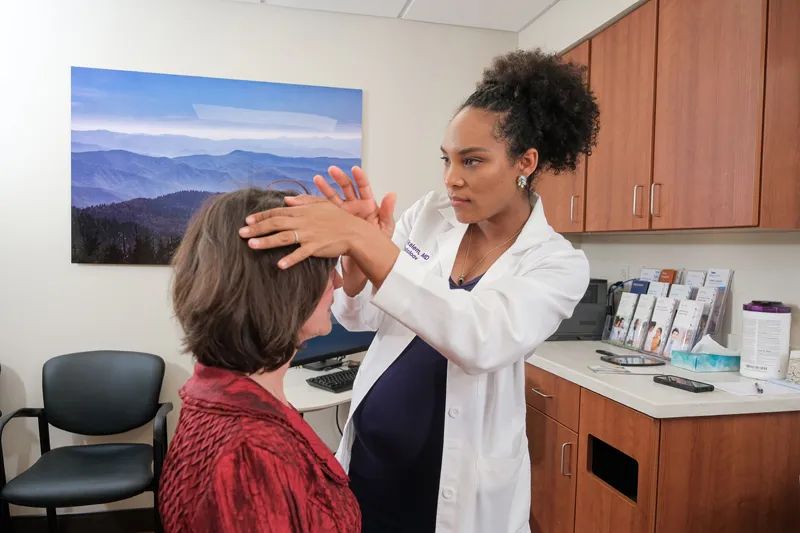
Untangled
Dr. Chloe Ekelem Challenges Hair Loss & Misconceptions about Rural Montana
Dr. Chloe Ekelem never imagined she’d find her “best life” living and working as a dermatologist focused on hair loss in rural Montana. Originally a California girl, she graduated from medical school in Georgia, continued her training in the Ventura, California, Family Residency Program, followed by dermatology fellowships in California and Utah.
In Ventura, she met a fellow resident, Dr. Orin Hansen. From the beginning, Hansen knew he had a job waiting for him in Hardin, Montana. A rancher’s son, he was raised on a saddle horse helping his dad mend fences and herd cows near Ekalaka, population 403. Did someone say “urban girl meets country boy and romance blossoms?” The two commuted between cities while completing their respective fellowships. Then, they moved to Hardin, married and welcomed their sweet baby girl, Cosette.
Ekelem’s circle openly wondered how their city girl would fare living on Montana’s vast open plains. With a ready grin, she’s quick to say she’s “just fine.”
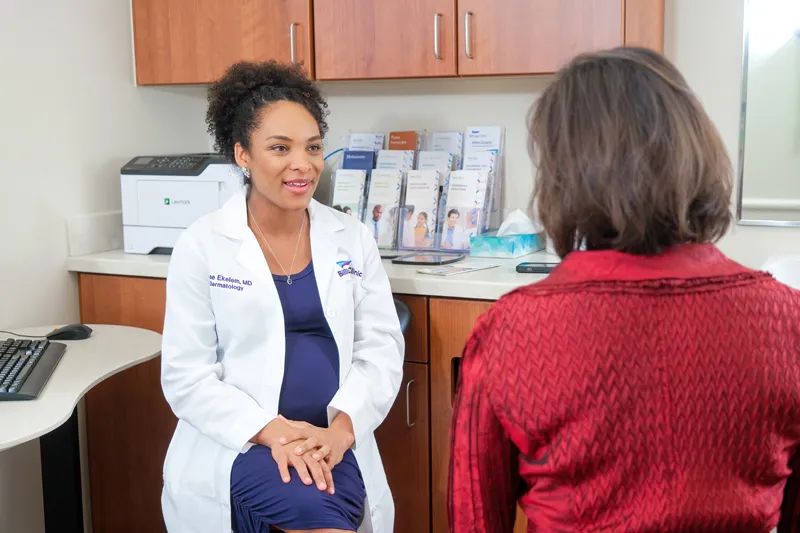
THE HAIR LOSS PUZZLE
Her interest in dermatology and hair loss began during medical school rotations that are intended to expose new doctors to a variety of specialties. Naturally curious, she was fascinated by the multiple causes of hair loss and the challenges it presented. Approaching each case of hair loss as if she is solving a puzzle, she finds great satisfaction when she can find a solution. Up to 70 percent of men and women experience some type of hair loss by age 70.
Billings Clinic was quick to embrace her skill set and her need for an unconventional schedule. It turned out to be a win-win scenario for everyone.
“I’m so grateful to Billings Clinic and the doctors before me who introduced flexible work schedules,” Ekelem says. One day each week, she works as a dermatologist at Hardin’s One Health Clinic, a Billings Clinic outreach site. The Hardin clinic benefits from her presence there because it’s difficult to find doctors to serve in rural areas. Two days a week, she sees dermatology and hair loss patients at the Billings Clinic main campus. The schedule minimizes driving time, introduces her to the Hardin community and gives her an opportunity to build a dermatology and hair loss practice. Her schedule is a working mother’s dream.
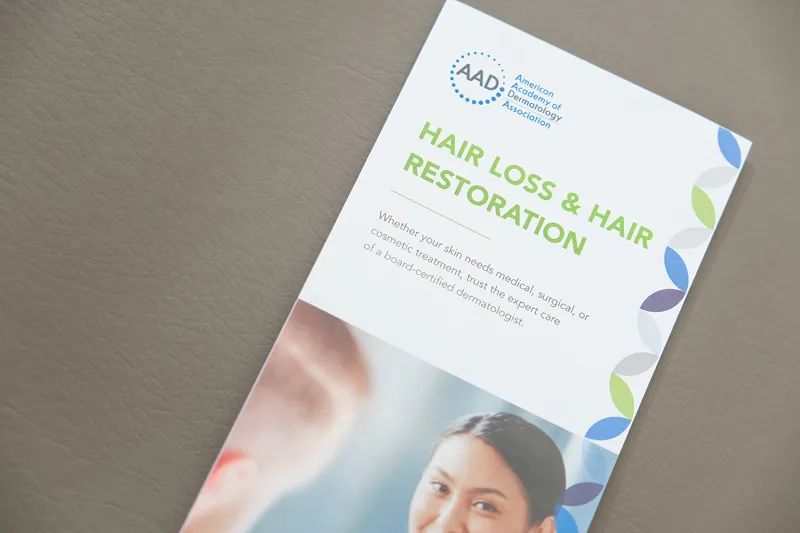
THE HEARTBREAK OF HAIR LOSS
LeAnn Larsen Melzer was one of Ekelem’s first patients at Billings Clinic. LeAnn was in the early stages of menopause when her hair began coming out in clumps during her morning showers. She read an article suggesting that menopause can cause hair thinning.
Looking for a solution, LeAnn spent “hundreds of dollars” on over-the-counter supplements, serums, shampoos and “snake oils.” She was often in tears. Amid her desperation, she was ashamed of her reaction.
“So many of my family and friends were experiencing life-and-death ordeals and I was worried about my hair,” LeAnn recalls.
Initially, she saw Roberta Bourgon, a naturopathic physician at Billings Clinic. After ordering a series of blood tests that yielded no clues, she suggested LeAnn consult Ekelem.
LeAnn recalls her lengthy first visit. Her questions were answered and the two talked about possible outcomes. LeAnn’s instincts told her that her hair loss was more than a menopause symptom. A scalp punch biopsy revealed a diagnosis of androgenetic alopecia, or female pattern baldness. During a second appointment, also thorough and patient-driven, LeAnn received a prescription for Minoxidil to be taken orally.
Low thyroid function can be a factor for hair loss. So can vitamin D, zinc and iron deficiencies, high testosterone levels, stress and the aftereffects of pregnancy or surgery. Ekelem treats all these early clues with caution as they may be just one part of the puzzle. Chemotherapy or medication-related hair loss is usually temporary. Hair often re-appears when the cancer medication or treatment stops.
Ekelem knows the huge emotional toll hair loss takes on her patients. We have deeply embedded cultural expectations for our hair. On the flip side, there are no solid standards to measure whether a treatment is effective. New hair growth is cyclical, and each patient is unique.
“There are no silver bullets for hair loss,” she says. “Hair loss is a big deal, whether you’re young, old, male or female. An important part of care is managing expectations.” Recovering one’s self-esteem and the loss of identity hair loss triggers can be a long process.
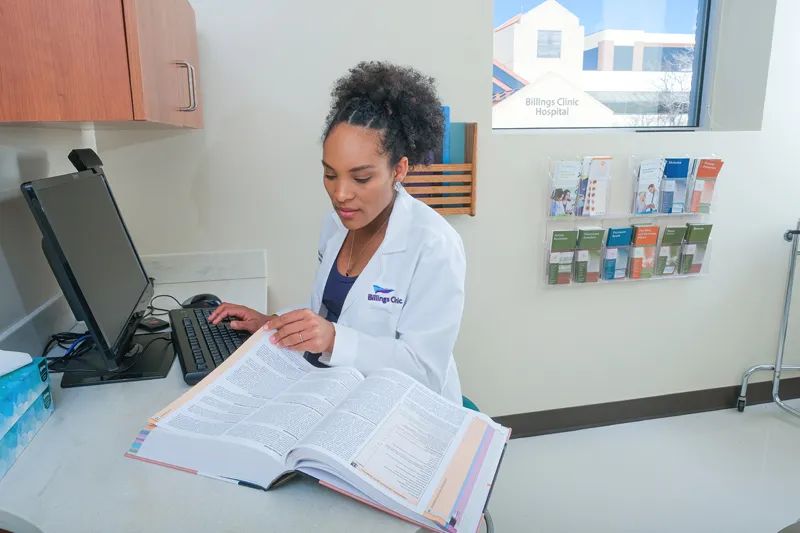
NEWER TREATMENTS ON THE HORIZON
For many years, the cornerstone of hair loss treatment has been Rogaine, also known by its generic name, Minoxidil. It blocks or limits hair shedding, encourages hair growth and improves hair health and is available over the counter as a cream or solution and as a pill by prescription.
Finasteride and Dutasteride were originally developed to treat male prostate issues, but they’ve been found to increase production of scalp hair follicles in men and women. Minoxidil and Dutasteride can be administered in pill form or injected directly into the scalp. None of these medications are recommended for pregnant women.
Platelet rich plasma (PRP) therapy, another approach, relies on the body’s ability to heal itself. First developed to treat joint pain and skin regeneration, PRP involves drawing blood, extracting the plasma (a known, rich source of growth-inducing ingredients) and reconstituting the plasma into a concentrated platelet mixture that’s injected directly into one’s scalp.
Red light therapy, marketed online and over the counter, is a more unconventional approach to hair loss. Wavelengths of red light are thought to stimulate the growth of hair follicles. Users receive red light through helmets, combs and headbands. As with most hair loss treatments, regular use over the long term yields the best results.
The fact that insurance doesn’t cover many of these treatments keeps some of these options out of reach for many. Insurance companies consider many hair loss treatments to be cosmetic in nature as they do not, in the industry’s view, limit one’s daily activities. The bottom line is that your insurance company might deny or limit coverage for medication or other treatment. If paid for out of pocket, solutions can quickly become cost prohibitive.
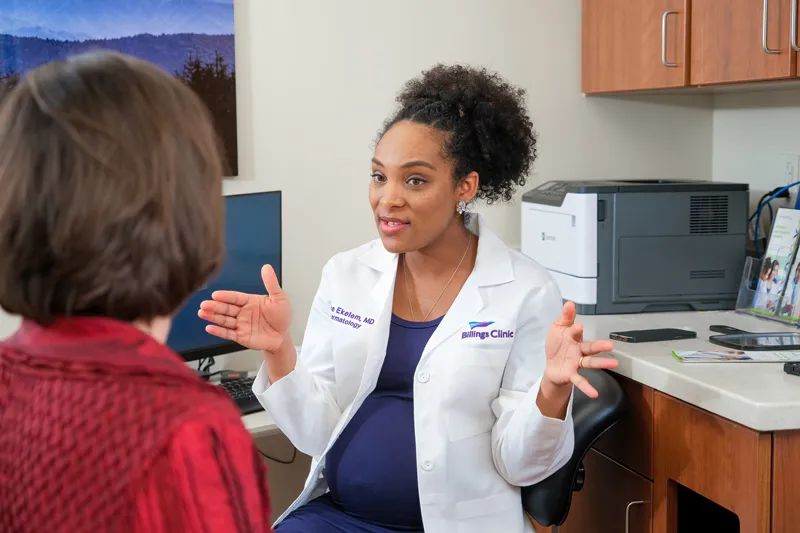
LOOKING FORWARD
Within three months of starting her Minoxidil regimen, LeAnn’s hair began to grow back. She no longer dreads her morning showers. She doesn’t fear that she’ll be bald for the rest of her life. She attributes her recovery to Ekelem’s compassion and expertise and to Minoxidil. She’s even found some humor in her hair loss recovery.
“I’ve always had straight, fine, dark hair,” LeAnn says. “It’s coming back curly and gray. I’ll take it!” LeAnn’s positive attitude is just what the doctor ordered.
“Hair loss is often out of our control,” says Ekelem. “I encourage my patients to focus on aspects of their lives that bring joy and a sense of satisfaction. For some, it may mean wearing a wig, getting a tattoo, or going natural, I’m all for it. I’m here to offer hope and support.”
LIVING THE RURAL LIFE
Ekelem is poised to challenge any misconceptions about rural life, noting that she and her family have been warmly welcomed and embraced. She remembers how hard it was to find a community in a large urban area. Hardin, she’s discovered, is home to people from many cultures, including farmers and ranchers with European ancestry, Northern Cheyenne and Crow families living near their traditional homelands, and a nearby Amish community.
Reflecting on her young family, the challenges of her current practice, and her small-town life under Montana’s big sky, an amused look crosses her face. “I hardly remember any misgivings I might have had about rural Montana. This is a wonderful place to be.”











